Dossier
The German National Forest Inventory
Thomas Riedel | 01.10.2021
It’s time again: In 2021 and 2022 inventory teams of the German National Forest Inventory (NFI) are measuring trees in forests and record lots of further attributes.
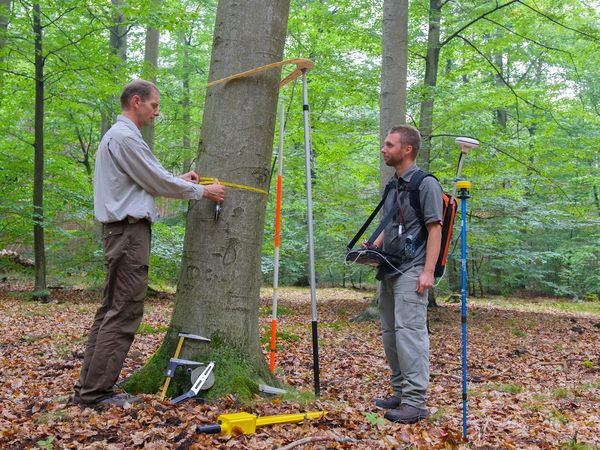
Out of this extensive data, we can calculate a variety of statistical indications for forests all over Germany and its states. The most important are: Forest area, growing stock, timber increment, harvested wood, the diversity of tree species, the age structure, the dead wood and the closeness to nature as well as the biomass and the carbon sequestration.
As a central controlling and monitoring instrument, the National Forest Inventory is an important basement for decisions in politics and economy. Important questions are for example: Which forest is ready for the future? How much wood can be used in terms of a sustainable forest management? Moreover, the data are an essential part of international reporting obligations such as the Kyoto Protocol and the Framework Convention on Climate Change.
German NFI, the fourth
The National Forest Inventory is currently in its fourth inventory cycle with reference date in 2022 (NFI 2022). Past inventories were referred to the years 1987, 2002 and 2012. In addition, carbon stock data were collected in 2008 and 2017 in sub-sample inventories. Some trees are thus now being measured for the sixth time.
For the NFI 2022, the largest sample size of all previous inventories is planned. The inventory methods have changed only marginally to maintain the comparability of previous data. For the first time, DNA samples were collected for the investigation of genetic diversity. With the integration of remote sensing data we want to obtain a higher spatial resolution of the results.
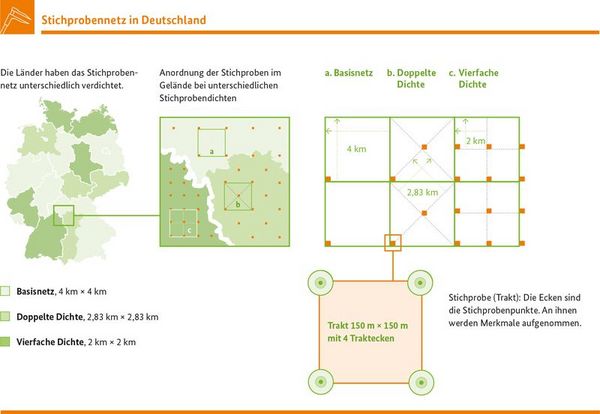
Before inventory teams collect the data in the forest, we review the previous inventory procedure together with experts from the federal states and adapt it to the new requirements. We determine which data is to be recorded in order to be able to answer many questions with the highest possible statistical certainty (see field instruction to the German NFI 2022).
Technical progress, new scientific findings and issues must also be considered. For example, DNA samples are being collected for the first time during the NFI 202 to determine genetic diversity.
To collect the data, inventory teams of the federal states travel to the permanent sampling points. These are located in a systematic sampling network that covers the whole of Germany in a 4 x 4 kilometres grid. More and more federal states are additionally densifying the network to 2.83 or 2 kilometres, so that the significance of the results can be increased even for smaller evaluation units.
To find the sampling points, inventory teams use satellite navigation systems. At each sampling point in a forest area they record, among other things, the tree species, the diameter and height of selected sample trees, as well as data on regeneration, forest structure and deadwood. In total, more than 150 attributes are collected.
The core of the data management is the central inventory database of the Thünen Institute. It contains the national data of all inventory cycles as well as the associated meta data.
Data collection
The inventory teams are equipped with mobile field computers and a data collection software especially developed for the National Forest Inventory (offline-client). The data is entered immediately in the forest and checked by the software for plausibility and completeness. No internet connection is required for this. In online mode, the data is later synchronised with the central database via the internet.
Using the online-client the inventory administration can work directly on the database. This allows them, for example, to import data from external data sources, assign the sample points to the inventory teams and monitor the work progress. The data integrity is guaranteed by a rights and workflow management.
The software was developed in cooperation with the company EDV Beratung Nüssler GmbH for the German NFI 2012 and has now been adopted for NFI 2022. The National Forest Inventory gets technical support from the central IT department of the Thünen Institute in Braunschweig. There, the database and application servers of the German NFI are managed in terms of network and security technology.
Data evaluation
The key element for the evaluation is the extrapolation of the data from the sample data to the total population of the forests in the inventory area. The extrapolation procedure follows from the sample design.
In several calculation steps, estimated values and their statistical certainty for the forests in the inventory area are calculated from the measured values of the trees. This is very complex and extensive because these extrapolations are calculated for a whole range of target attributes (e.g. forest area, growing stock, wood increment) and various combinations of classification attributes (e.g. tree species, forest owner types, federal states). For the third national forest inventory, a total of 348 target attributes were extrapolated according to 140 classification attributes.
Presentation of results
The extrapolation results will be stored into a results database. This is the basis for the presentation of the results on the website https://bwi.info. On this website, results can be searched and displayed as tables, graphics or maps.
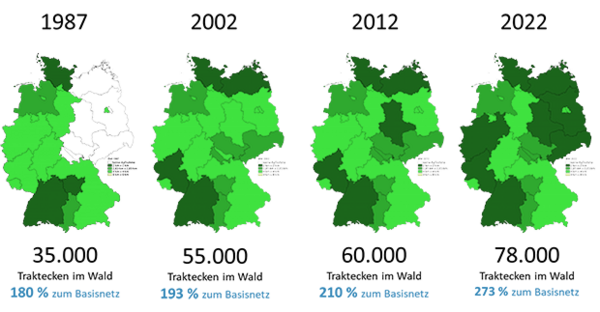
Following the amendment of §41a of the national forest law in year 2010, the national forest inventory has to be done every 10 years and in the years between – if necessary – data of the carbon stocks in forest can be collected.
- 1986-1991 First National Forest Inventory (NFI 1987)
- 2000-2002 Second National Forest Inventory (NFI 2002)
- 2008 Inventory study 2008 (IS 2008, subsample)
- 2011-2012 Third National Forest Inventory (NFI 2012)
- 2017 Carbon inventory 2017 (CI 2017, subsample)
- 2021-2022 Fourth National Forest Inventory (NFI 2022)
The National Forest Inventory is a project jointly supported by the federal and state governments. According to §41a of the national forest law, the National Forest Inventory is a legal duty. The Federal Ministry of Food and Agriculture (BMEL) determines the timing as well as basic provisions on the inventory procedure and basic data for each inventory cycle in a Federal Forest Inventory Ordinance. Details for the data collection is regulated by a field instruction. The BMEL has mandated the Thünen Institute of Forest Ecosystems with the federal inventory administration.
At the Thünen Institute we develop in close cooperation with the federal states the measuring and assessment methodology and data management, we train the inventory teams and evaluate the data nationwide. The countries collect the data. For this purpose they use their own staff or contractors. The optional interim inventories are carried out by the federal authorities under its own responsibility.
Over the past years the technic of remote sensing has developed and the availability of remote sensing data has improved. These information sources can also be used for additional evaluations as part of the national forest inventory. For the NFI 2022 it is planned to use remote sensing data for regional evaluations.

The national forest inventory can only supply information on past dates and periods. Many forestry policy relevant questions need a future view on possible developments. Therefore, the forest development and timber production model WEHAM was developed. WEHAM uses the data, evaluation software and presentation platform of the National Forest Inventory. WEHAM consists of three modules:
- With the growth module, the growth of the sample trees is modelled in diameter and height. The growth functions were derived from the repeated measurements of identical sample trees from different inventory dates.
- In the harvesting module, it is modelled which sample trees are to be felled. For this module specifications are made for the thinning regime and the target age or diameter of the trees to be removed. This module is complemented by a mortality function, which applies in case of felling restrictions.
- In the assortment module, the tree trunks are divided by calculation into logs, industrial wood and fixed lengths.
The structure of the data which has been generated by WEHAM, is similar to the survey data of the National Forest Inventory and can therefore be processed with the same evaluation and presentation software. Only they are not measured values, but model values. And they don’t rely on past dates, but on future dates.
WEHAM does not provide forecasts because many model parameters are unknown. This applies in particular to activities of forest owners as part of the harvesting module. But even a possible change in growth can’t be reliably projected to the future. With the help of a specific variations of the model parameters, scenarios are created, which show off possible developments of the forests and potential timber supply under different conditions. In two current projects we want to create preconditions for the further development of WEHAM.
Maps explain better than numbers
Even if the single sample points aren’t representative for their immediate surroundings, the zoomable point grid maps can give an impression on the distribution of the forest and its characteristics in Germany. The exact location of the sampling points should not be known in order to avoid that the sample can be affected. The sampling points are located somewhere on the squares drawn in the maps.
Further information
Information on Federal Ministry of Food and Agriculture: https://www.bundeswaldinventur.de/en/
National Forest Inventory project at the Thünen Institute: https://www.thuenen.de/en/wo/projects/forest-monitoring/projekte-bundeswaldinventur/national-forest-inventory
Results database: https://bwi.info
You can find the latest information on the national forest inventory on our twitter channel: https://twitter.com/bwi_info

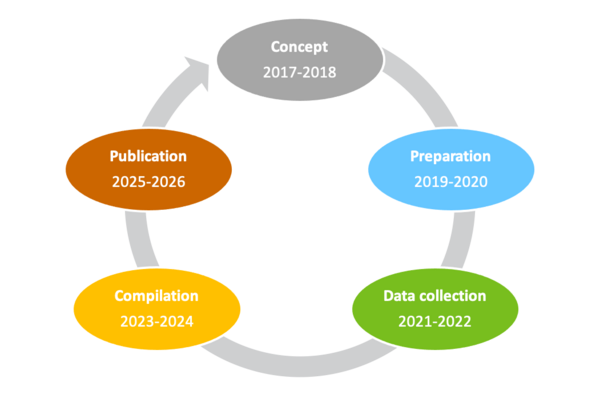

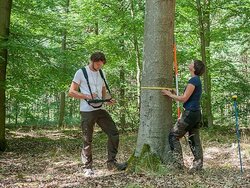
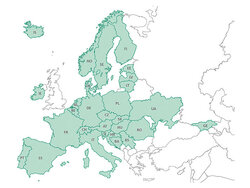

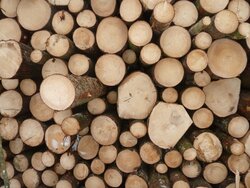

![[Translate to English:] Logo des Bundesministerium für Ernährung und Landwirtschaft](/media/allgemein/logos/BMEL_Logo.svg)